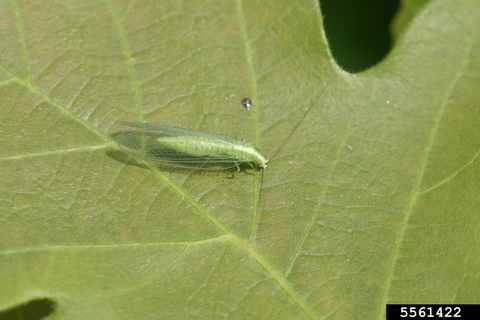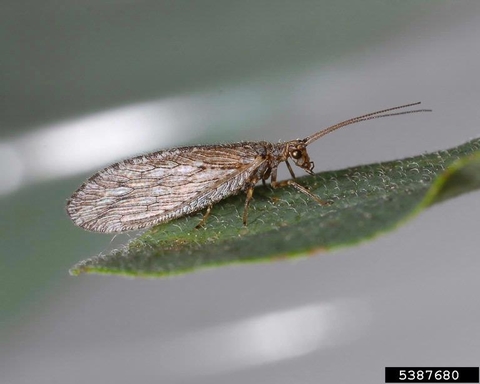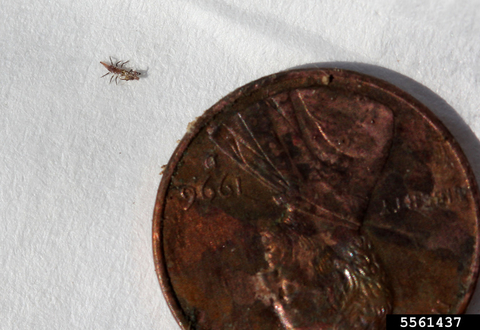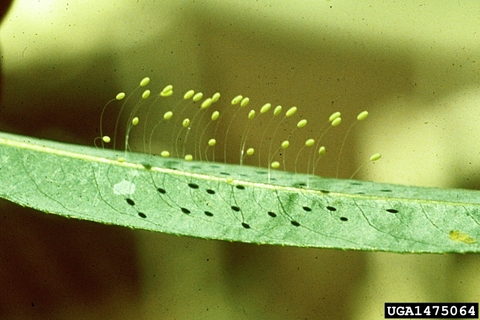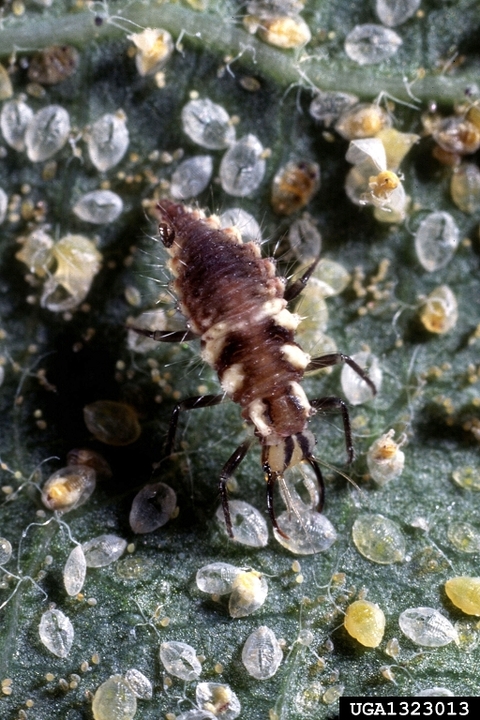Quick facts
- Lacewings are a common group of Minnesota insects whose larval form eat other insects.
- The adults are delicate and weak fliers, most likely to be seen by lights on summer nights.
- Larvae have large, protruding jaws, and are capable of eating hundreds of aphids in their lifetime.
How to tell lacewings from other insects
Lacewings have four life stages: winged adults, wingless immatures, woven pupa, and eggs. The immature stage is most beneficial, as they eat other insects.
Adults
- There are two groups of lacewings in Minnesota, one that is brown and one that is green. They both look similar, with one group being light brown and the other light green.
- Adult lacewings have slender bodies with long net-like wings held over the body, long slender antennae, and golden eyes. They are about 3/4 inches long.
- Adults are often seen near lights on summer nights.
Larvae
- Larvae are up to a half-inch in length, they are usually a mixture of cream and brown.
- They have large mouthparts that are easily noticed, and you may see them feeding on other insects with these jaws.
Eggs and pupae
- Eggs are small but sometimes noticed because they are laid on the end of a hair-like stalk.
- Pupae appear as silk-coated spheres.
Biology
Lacewings have four life stages: winged adults, wingless immatures, woven pupae, and eggs. The immature stage is most beneficial, as they eat other insects.
- Some lacewing species are more common in yards and gardens, while others are better adapted to living in trees and forests.
- Depending on the species, lacewings either overwinter as a pupa or as an adult. They hunker down in piles of debris and leaves.
- Adults emerge in the spring, disperse, mate, and lay eggs.
- Eggs hatch and larvae begin to feed. They can eat up to 200 aphids per week.
- Larvae turn into pupae, and the cycle starts over.
- There are multiple generations per year.
Promoting lacewings in gardens and farms
To support lacewings in your outdoor space, think about what each life stage needs. This means there needs to be a variety of flowering plants available for them to complete their lifecycle.
- Have consistently flowering plants in your space.
- Allow some amount of aphids to be on plants.
- Limit pesticide applications. Many insecticides are not selective, meaning they will kill both pests, beneficial insects, and other insects.
- Provide overwintering habitats by leaving some plant debris and dead leaves on the ground over the winter.
Is it worth buying lacewings for my garden or farm?
Lacewing eggs that hatch into larvae are available for purchase from garden catalogs and websites. Compared to other, more mobile natural enemies, lacewing larvae are better at staying put and feeding near where they are released. However, they are general feeders, meaning they will eat pests and other beneficial insects.
Do I have other predator insects around? Lacewings eat a wide variety of insects and will eat other natural enemies.
What pest am I trying to control? While lacewing larvae are ferocious predators, they do best at controlling small, soft-bodied insects.
Reviewed in 2022


